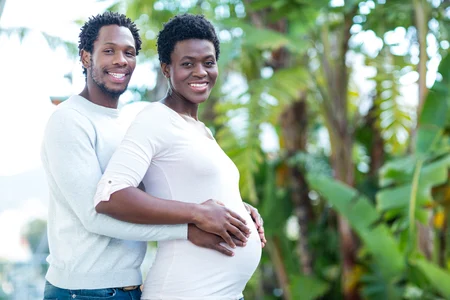Let’s call my husband Mike. He’s got Italian and Irish roots and grew up just outside Boston, which means he’s firmly in the “white” category. As he goes about his day—dropping the kids off at school, taking the subway, and enjoying the perks of the Anglo-Saxon patriarchy—he encounters plenty of folks just like him. They don’t seem to have any special secret handshake or nod, but who knows?
Now, as someone who is half-Asian and half-white, I can tell you we have our own thing going on. When I spot another mixed-race individual, there’s this unspoken connection, a little nod of recognition that says, “Hey, I see you and your mixed heritage. I’ve been there too.” I like to call it the Hapa Moment.
“Hapa” is a Hawaiian term that means half-white but has come to refer to those of us who are mixed Asian. Back in the ‘70s, being half-Asian was quite the rarity. I can’t tell you how many times I was asked, “Where are you from?” or “What are you?”—my all-time favorite being, “Ni hao. Do you cook Chinese food?” (For the record, I’m from California, I’m a human being, and no, that’s not how it works).
As a kid, these questions made me uncomfortable, yet they also filled me with pride. They highlighted my uniqueness in a sea of mostly white faces, who, to be honest, seemed pretty dull. While they shopped for sugary cereals and dined on tuna casserole, my family was off enjoying dim sum in Chinatown one day and grilling steaks the next. We were simply more exciting. Plus, I adored my Chinese-American relatives, which made it all the cooler.
But then puberty hit, and things got weird. Random guys thought it was okay to comment on my “slanted” eyes as an icebreaker, often following up with, “My last girlfriend was Japanese.” The sexual and sexist undertones were nauseating and infuriating…not to mention incredibly dumb (like that time an old dude asked if my boyfriend “liked Chinese food,” which made me want to scrub myself with bleach).
When I met Mike, I never would’ve thought to ask if he made a mean potato or had any mob ties (though I do indulge in my fair share of drinking jokes). He’s never been told he’s exotic or fetishized—aside from that one wild boys’ weekend in Montreal, but he’s not keen on rehashing that. His name screams Irish, yet he identifies more with his Italian heritage. And yes, he does make a delicious red sauce. The key difference is that he can choose how to share these aspects of himself, while those of us who are mixed often had our identities shaped by other people before we even opened our mouths.
When I run into another half-Asian person at my kids’ school, I don’t get bombarded with ridiculous questions. I don’t assume they grew up speaking another language or dodging natural disasters. Instead, I think they probably grew up in places like Jersey or Michigan, just like my other friends. Yet, there’s a bond we share, a mutual understanding of the unique experiences we’ve faced. Perhaps they also had a high school boyfriend who wanted to “order some slope chow” for dinner or encountered an old Vietnam veteran who called them a “gook” (to which I really wanted to respond, “Actually, I’m a chink, but thanks for your service”).
These days, being mixed isn’t such a big deal. There are plenty of hapas around, and—surprise!—in some white/Asian couples, the guy is the Asian one! Cab drivers, who used to be the worst offenders, barely acknowledge me anymore, which could be due to my aging out of the “subservient Asian nympho” stereotype or a larger social change. My kids, on the other hand, see their mixed backgrounds as just another part of life. They’re like all their friends, a delightful mix of ethnicities, proudly sharing their fractions like, “I’m a quarter Chinese, a quarter Italian, and a third Martian.”
Recently, we spent time with my Chinese-American family. Afterward, my (Jewish, white) friend joked with my kids, “Did you see a lot of Chinese people on your vacation?” My son looked utterly baffled and simply replied, “Huh?” To him, everyone was just Auntie Something or Cousin So-and-So; he couldn’t tell the difference between full Chinese relatives and the mixed ones or even the Indian and Filipino cousins by marriage. To him, it was all one big family stew.
So, is this progress? My son won’t hear anyone say, “No starch, please,” thinking they’re being funny. My daughter likely won’t be subjected to crude “Oriental massage” jokes. Yet, with so many ethnicities mixed into their genetic makeup, they come out almost…neutral. They won’t have anything—besides their achievements and personalities—that makes them feel particularly special. We’re gaining something, but perhaps we’re losing a bit too.
In case you’re interested in more about this journey, feel free to check out this post for some engaging insights. And if you want to explore the world of at-home insemination, Make a Mom has some great resources. For more info on pregnancy and fertility, Progyny is an excellent resource.
In summary, as we navigate the complexities of identity and race, it’s clear that while we’re making strides toward a more inclusive society, we may also be losing some of the uniqueness that comes with our individual backgrounds.
